I. The mirror
In Hera, I find a reflection of myself: I have spent years absorbed in roles expected of me—mother, wife, caregiver—while my creative work receded quietly into the background. Some of this was a personal choice, shaped by my own circumstances and self image, but much of it was structural, imposed by a world that still assumes women will put others first, carry the mental load, be accommodating, occupy as little space as possible.
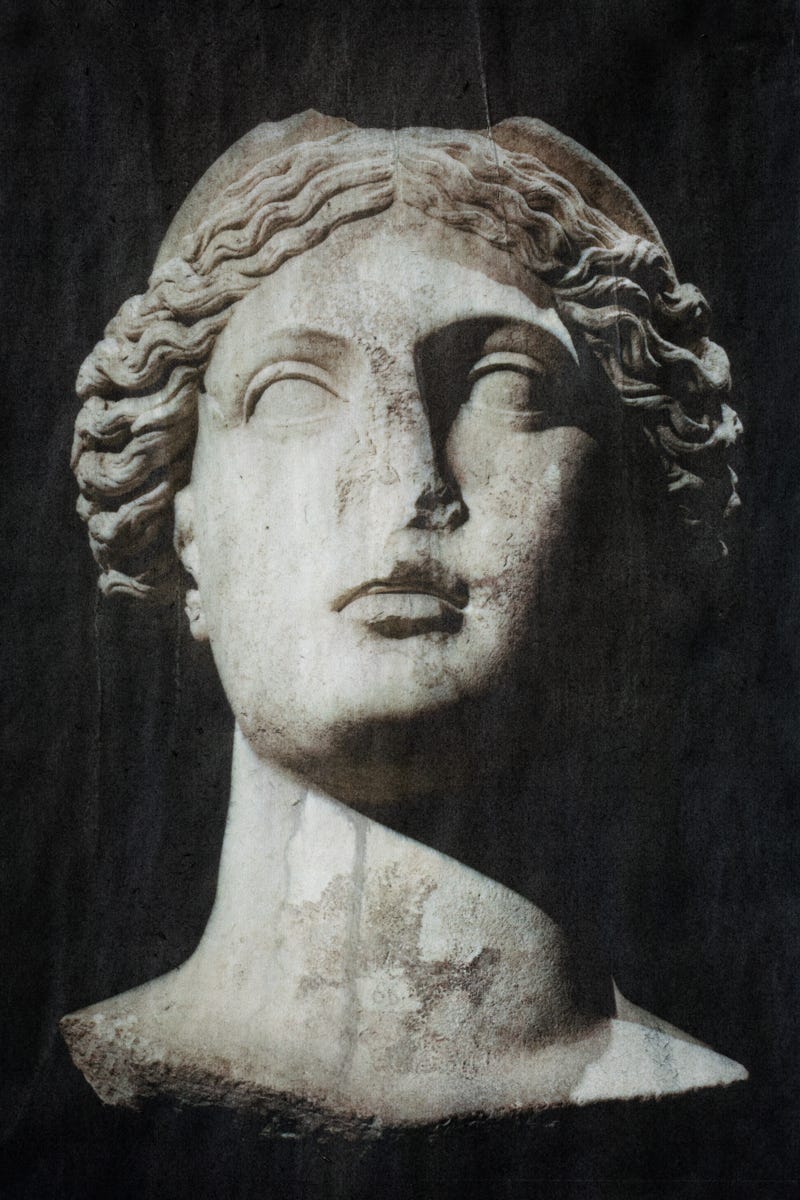
As Mirionima is a project of reimagining the self through female deities and their symbols, it felt right to begin by invoking Hera1.
“Glorious Goddess, origin of all things” wrote Alcaeus in fragment 129, an invocation of a far older, far more expansive goddess than the jealous wife we meet in the Iliad.
Hera’s origins run deeper than Zeus’s: her name doesn’t come from the Indo-European root like his, and the animals that surround her—serpents, lions, birds—point to a much more ancient lineage. She is likely a descendant of the prehistoric Serpent Goddess2.
Her temples were grounded in valleys, near river mouths and close to the sea, like the Heraion at the mouth of the River Sele.
Among the many depictions of Hera preserved at the Archaeological Park of Paestum and Velia—which portray her as a sovereign figure, enthroned and crowned—I chose to photograph this incomplete head.
In the studio, I began experimenting with a technique that has since become central to my work: pouring darkened water over a surface and gently placing the photograph atop it. The liquid seeps into the paper creating coral or fungi like patterns, accentuating details and contrast on one side while veiling the the goddess’s features on the other.
The veil—a recurring presence in my work—is not just a visual layer. Here, it embodies a deeper cultural rupture.
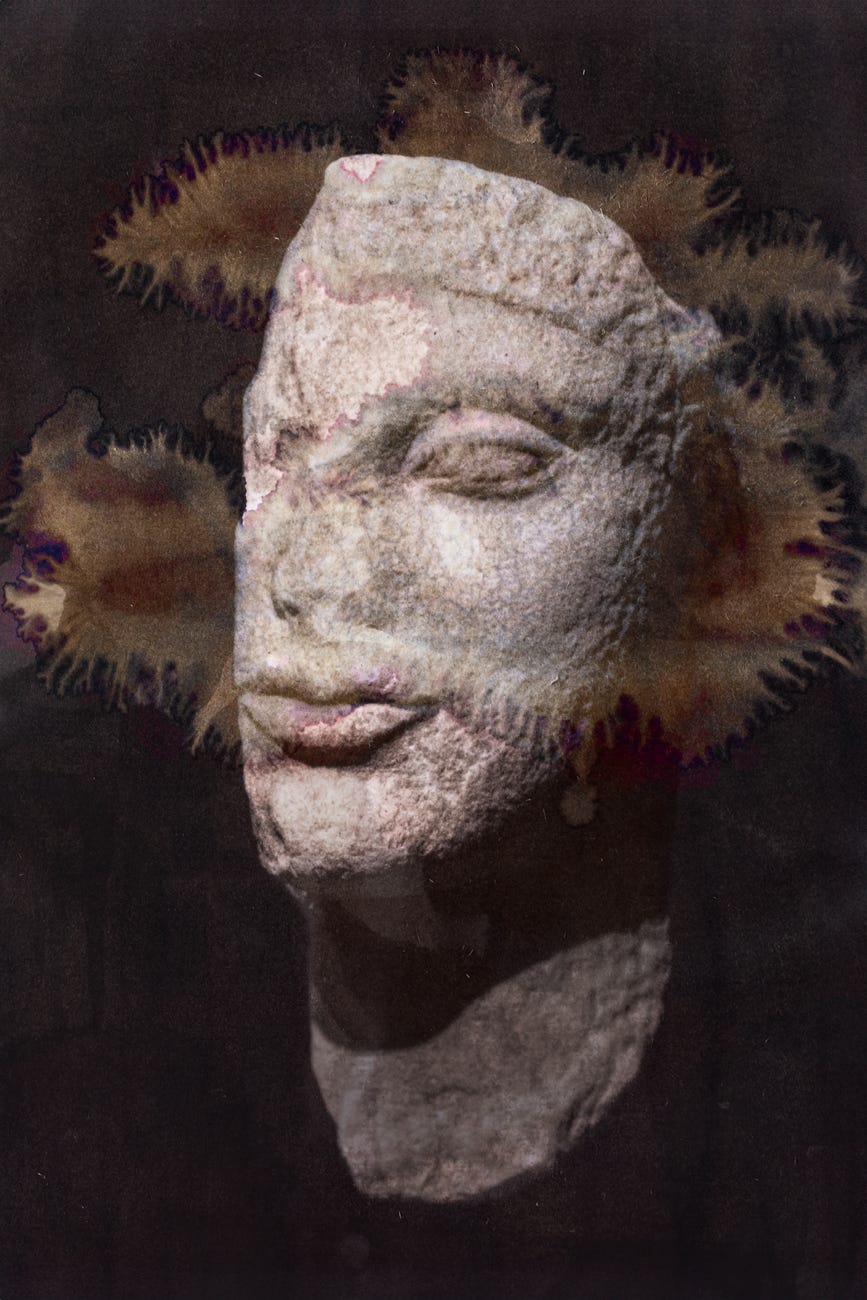
II. The Veil
In the Neolithic era, the hybrid bird-and-snake goddess was the great goddess of the life continuum—birth, death, and rebirth. She was creator and destroyer, maiden, crone, and the goddess in her prime. Through the Hieros Gamos, the “sacred marriage,” she mated with the young god (son, brother) and gave birth, again and again, to creation itself3.
But as matrilineal societies gave way to patriarchal ones—where kinship had once been traced through the mother, and marriage was not a requirement for familial legitimacy—the institution of marriage became a way to transfer power over women from their birth family to their husband's control. The bride became a commodity, her agency stripped away. Economically and socially dependent, infantilized, denied autonomy. The veil came to symbolize this submission to male authority.
Seen through this lens, with Hera’s marriage to Zeus, the meaning of Hieros Gamos shifted. What was once a sacred union of earth and sky, symbolizing divine balance, now also reflected Hera’s subjugation: while still representing cosmic harmony, their marriage marked Hera’s reduction to the role of 'wife of,' the first association still made today when considering her in the context of Greek deities.4
Her diminished power and the subtle mockery in the portrayal of her jealousy and rage—like in the Iliad—reflects the cultural movement away from an egalitarian5 society that revered the feminine in its fullness, toward one that honored only those aspects deemed useful for upholding the established order.
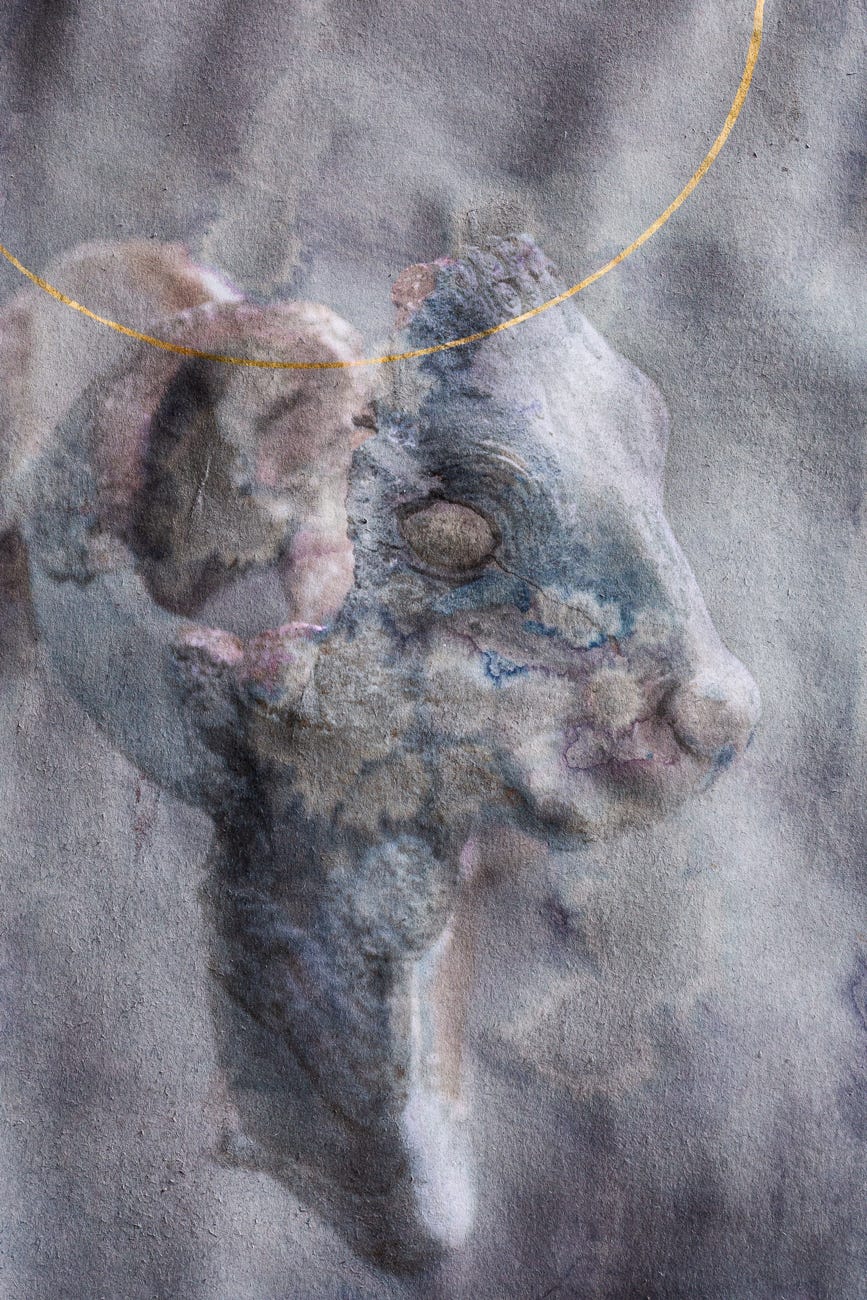
III. The Bull
At the Archaeological Park of Paestum, besides Hera’s fragmented head, I also photographed a bull’s head—what remains of a painted sculptural group depicting the abduction of Europa, when Zeus transformed into a bull to rape her.
These two fragments belong to different objects, different contexts, yet to me they are deeply connected.
Hera was closely linked to pastures, and among the votive offerings found in her temples—alongside terracotta serpents—were horned animals and calves. Homer called her boōpis, “cow-eyed one.”
The bucranium—a bull’s skull—was a sacred symbol since the Neolithic. In early iconography, the horns mirrored the uterus6 and the crescent moon, symbols of nature’s rhythms and the divine feminine. Their connection to death and regeneration is well attested: bucrania were often placed near tombs to signify rebirth, as in the necropolises of Sardinia7.
But over time, the bull was redefined. Its association shifted from the goddess’s regenerative power to brute force and male dominance—just as in this myth, where Zeus becomes a bull to abduct and possess Europa.
In the Paestum statuette, the horns—the very feature that once linked the bull to the uterus and fallopian tubes—are missing. In my post-production process, I redrew them in gold foil, an attempt to restore the lost resonance of the symbol: not one of domination, but of regeneration.
IV. Conclusion, and a bonus track
Working with Hera stirred something I didn’t expect. At first, I resisted her—this deity so often reduced to “the wife of,” always defined in relation to someone else. I didn’t want to see myself in her. But that resistance wasn’t really about her. It was about the way power distorts the feminine, and how we internalize that distortion.
As I traced her fragments, I felt my own fracture lines. It sharpened my rage—at the system, at the myths we inherit—and also opened something gentler: a new way of seeing myself, and other women, with less judgment. More tenderness.
In the end it left me with a question: what would it mean in our everyday life to stop apologizing for taking up space, to stop defining ourselves through the roles society has imposed on us?
V. Work in progress images and notes

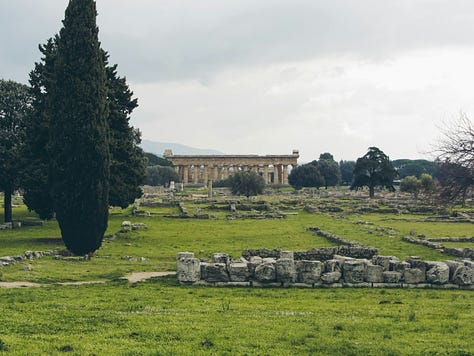
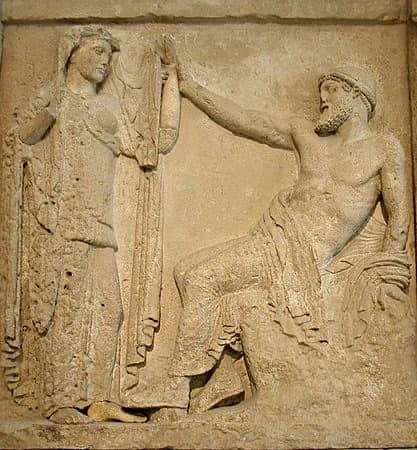






Notes
“In ancient Greece, women knew that their vocation or their stage in life placed them under the dominion of a particular goddess whom they honored” … “Women in childbirth prayed to Artemis to deliver them from pain; they invited Hestia onto their hearths to make a house into a home.” ... “Many of the Homeric hymns are invocations to the Greek deities. For example, a Homeric hymn may create an image of a goddess in the mind of the listener by describing her appearance, attributes, and feats. Then she is invited to be present, to enter a home, or provide a blessing. The ancient Greeks knew something we can learn: goddesses can be imagined and then invoked.”
Jean Shinoda Bolen. Goddesses in Everywoman. Powerful Archetypes in Women's Lives. Harper Paperbacks; 13th edition (July 1, 2014)
Marija Gimbutas. The Language of the Goddess: Unearthing the Hidden Symbols of Western Civilization. San Francisco: Harper & Row; (1989)
Edwin Oliver James. The Cult of the Mother Goddess. London: Thames & Hudson, (1959), p. 87.
Anne Baring, Jules Cashford. Il Mito della dea. Evoluzione di un’immagine. Roma: Venexia; (2017)
Riane Eisler. The Chalice and the Blade. Our History, Our Future. HarperOne (1988)
“The key to understanding Neolithic renditions of the bull's head and horns (bucranium in archaeological literature) comes through their resemblance to the female uterus and fallopian tubes. In the temples of catal Huyuk, on a series of female forms there are actually depicted bucrania where the uterus and fallopian tubes should be.”
Marija Gimbutas (Author), Miriam R. Dexter (Editor). The Living Goddesses, University of California Press (2011)
Dorothy O. Cameron, Symbols of Birth and of Death in the Neolithic Era, Kenyon-Deane (1981)
“Sardinians carved one of the important Neolithic symbols of regeneration the bovid head, or bucranium into many hypogea walls. Bovid-head reliefs occur in the symbolically important position above the tomb's entrance, on both sides of the entrance, or elsewhere inside the tomb. In addition to almost omnipresent bucrania and red ocher-washed walls, within the chambers and ceiling of the hypogeum several specific images emphasize the theme of regeneration: eyes, breasts, owl heads, ram horns, double spirals, and/or moon-cycle symbols.”
Marija Gimbutas (Author), Miriam R. Dexter (Editor). The Living Goddesses, University of California Press (2011)




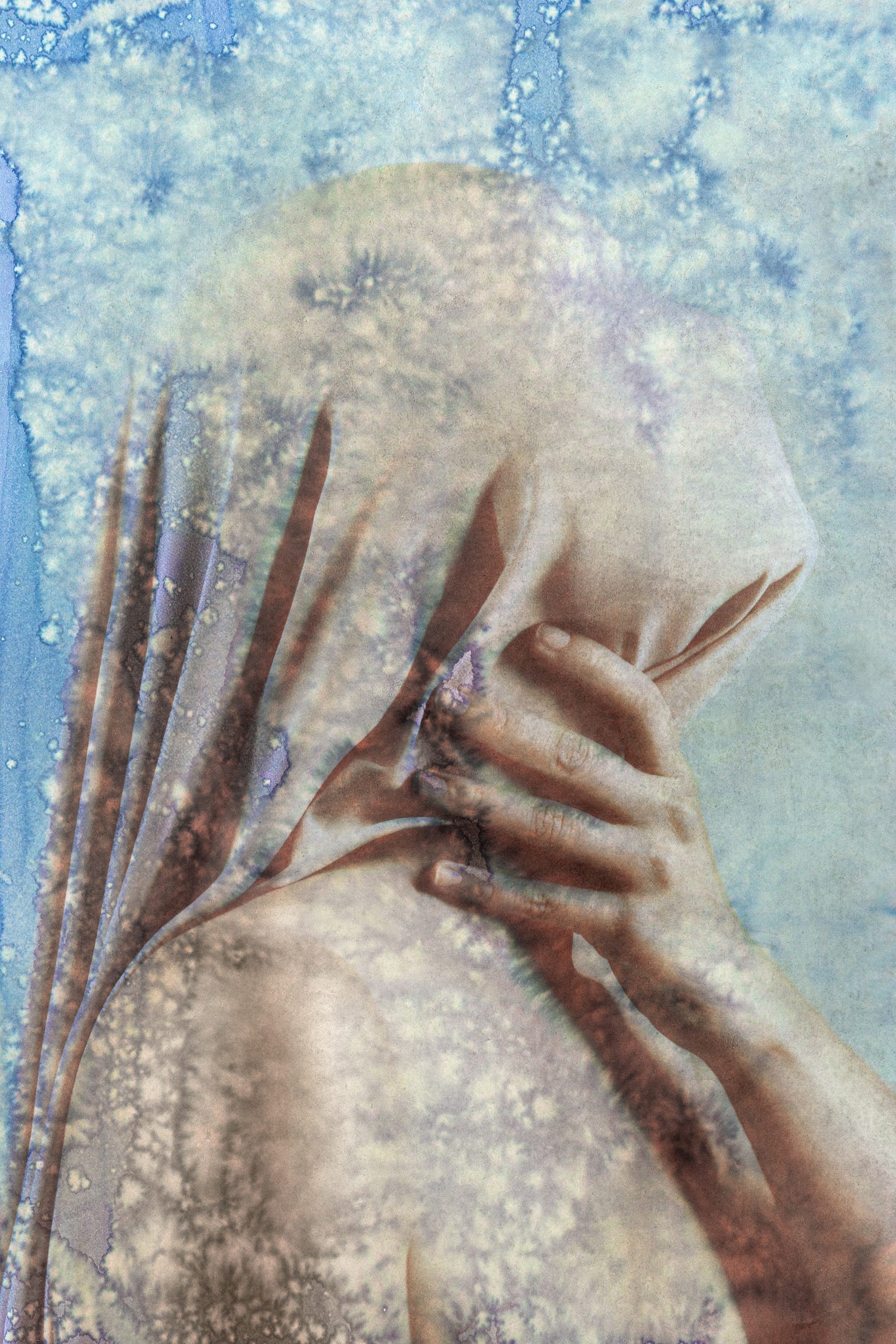
Teresa, what a beautiful article. You perfectly captured what women feel, our role in patriarchal society and the decisions only we as women must endure. Unfortunately, we become even more invisible as we physically age. How different it must have been for women in a matriarchal society. Thank you for reminding us through your art and writing, that we were always here. You have inspired me.